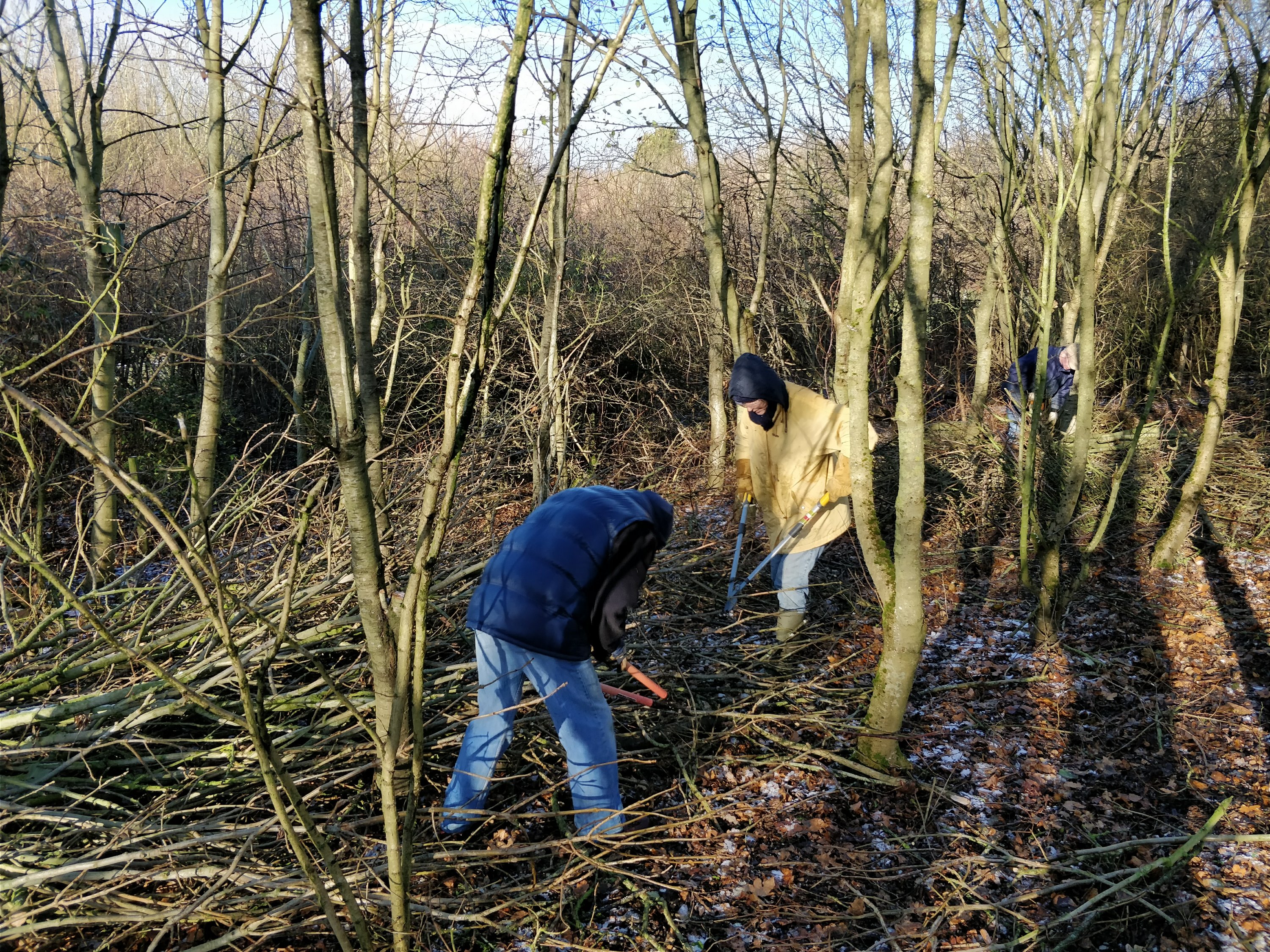Deer Park Wood (DPW) was planted between approximately 2000 and 2006 at a high density with a variety of young tree species (‘whips’ – up to 1 metre) and larger specimen trees. This method of planting makes it possible for the tree foliage (canopy) to create shade: this prevents the growth of weeds which could interfere with their growth. The wood was left unattended until 2010, when WWV was licensed to work there.
A key part of woodland development, which might sound counterproductive, is to remove a proportion of the trees in order to create a more healthy environment: crowding leads to disease and stagnation. In creating a woodland, many more trees must be planted than will be alive in the wood decades ahead – most will be removed, leaving a carefully balanced range of more mature trees with more room to grow.
Now that the trees are established, the wooded areas need thinning. This is a complex process and need expert involvement. As a group of keen amateurs, we have created a path around the wood, and we have done some coppicing in many parts of the wood, but have been constrained by national forestry regulations which put a limit on what can be cut without permission.
In order to move ahead with our work, a management plan has been produced. In November 2017 the WODC agreed a Countryside Stewardship Agreement and appointed consultants who have now (January 2019) produced the Plan and registered it with the Forestry Commission. We are actively involved in the creation and execution of the plan, designing a resource for Witney for decades to come.
The main document is available for reading or download here.
(It is a very detailed document, and a large file – 44MB).
The first major intervention (December 2017) in this process was the thinning of a small section of the north east mound. Expert contractors selected and felled, and we took over to strip the side branches (brash) of the felled trees and create habitat piles which are essential for woodland health. These piles of rotting wood support a range of fungi, green plants and animals (mainly invertebrates) which are a vital part of the wood ecosystem.
Clearing felled timber – December 2017



